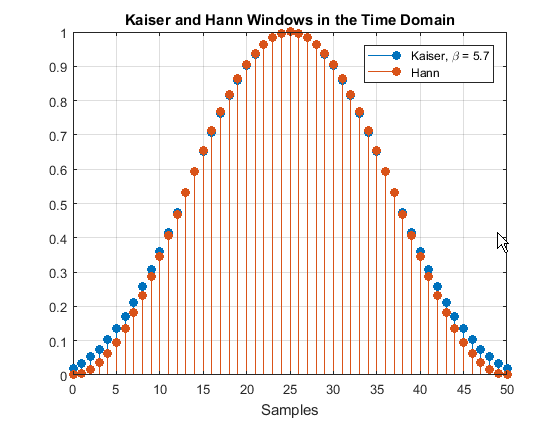Spectral Windowing
Any real-world signal is measurable only for a finite length of time. This fact introduces
nonnegligible effects into Fourier analysis, which assumes that signals are either
periodic or infinitely long. Spectral windowing, which consists
of assigning different weights to different signal samples, deals systematically with
finite-size effects.
The simplest way to window a signal is to assume that it is identically zero outside of the measurement interval and that all samples are equally significant. This “rectangular window” has discontinuous jumps at both ends that result in spectral ringing. All other spectral windows taper at both ends to lessen this effect by assigning smaller weights to samples close to the signal edges.
The windowing process always involves a compromise between conflicting aims: improving resolution and decreasing leakage.
Resolution is the ability to know precisely how the
signal energy is distributed in the frequency space. A spectrum analyzer
with ideal resolution can distinguish two different tones (pure sinusoids)
present in the signal, no matter how close in frequency. Quantitatively,
this ability relates to the mainlobe width of the transform of the
window.
Leakage is the fact that, in a finite signal, every
frequency component projects energy content throughout the complete
frequency span. The amount of leakage in a spectrum can be measured by the
ability to detect a weak tone from noise in the presence of a neighboring
strong tone. Quantitatively, this ability relates to the sidelobe level of
the frequency transform of the window.
The better the resolution, the higher the leakage, and vice versa. At one end of the range, a rectangular window has the narrowest possible mainlobe and the highest sidelobes. This window can resolve closely spaced tones if they have similar energy content, but it fails to find the weaker one if they do not. At the other end, a window with high sidelobe suppression has a wide mainlobe in which close frequencies are smeared together.
Signal Analyzer uses Kaiser windows to carry out windowing. For Kaiser windows, the
fraction of the signal energy captured by the mainlobe depends most importantly on an
adjustable shape factor, β. The shape factor
ranges from β = 0, which corresponds to a rectangular window, to β = 40, where a wide mainlobe captures essentially all the spectral energy
representable in double precision. An intermediate value of β ≈ 6 approximates a Hann window closely. To control β,
use the Leakage slider on the Spectrum and
Spectrogram tabs. If you set the leakage to
ℓ using the slider, then ℓ and
β are related by β = 40(1 – ℓ). See kaiser for more details.


51-point Hann window and 51-point Kaiser window with β = 5.7 in the time domain51-point Hann window and 51-point Kaiser window with β = 5.7 in the frequency domain




















 599
599











 被折叠的 条评论
为什么被折叠?
被折叠的 条评论
为什么被折叠?








